Mikaël Perron, 27 December 2021
Our conversation here in Broadsides about the flaws of the CSC program took us very far on some interesting Ideas. It led to David Dunlop suggesting that Canada should only build 12 CSC and rapidly build 4 Arleigh-Burke-class destroyers ahead of the CSC to get 4 ships with more missiles and top speed at a cheaper cost per ship. I then suggested that what we would need is an almost off-the-shelf proven design that would be affordable to build and affordable to operate too. It would require minimum modifications so it could start building within a year and be delivered within 5 years or so. But within our financing constraint, we should aim for maximum commonality with the CSC but also avoid any major expensive modifications in order to control cost and respect our ‘’speedy’’ schedule. I proposed to equip those AB Flight IIIB with Leonardo 127/64 LW Gun, BAE’s 30mm gun Multi-role boat, CH-148 helicopter and lower aft missiles count down to 16 MK41 Vls cell and 12 Exls Vls and ad 8 NSN missiles. I also suggested that the combat system and sensor remains untouched to again control cost and time. David is suggesting a higher missile count and the fitting of the CSC’s combat system and beefed-up SPY-7 radar since the design of both item might be ready by then. So I choose to illustrate both option with a starboard side view of a Flight IIIB Canadian AB class with SPY-6 radar and a Port side view of a Flight IV Canadian AB class with SPY-7 and MDA illuminator radar. Sorry but I kept my own version of the missile fit on both drawing graciously colored by my brother.
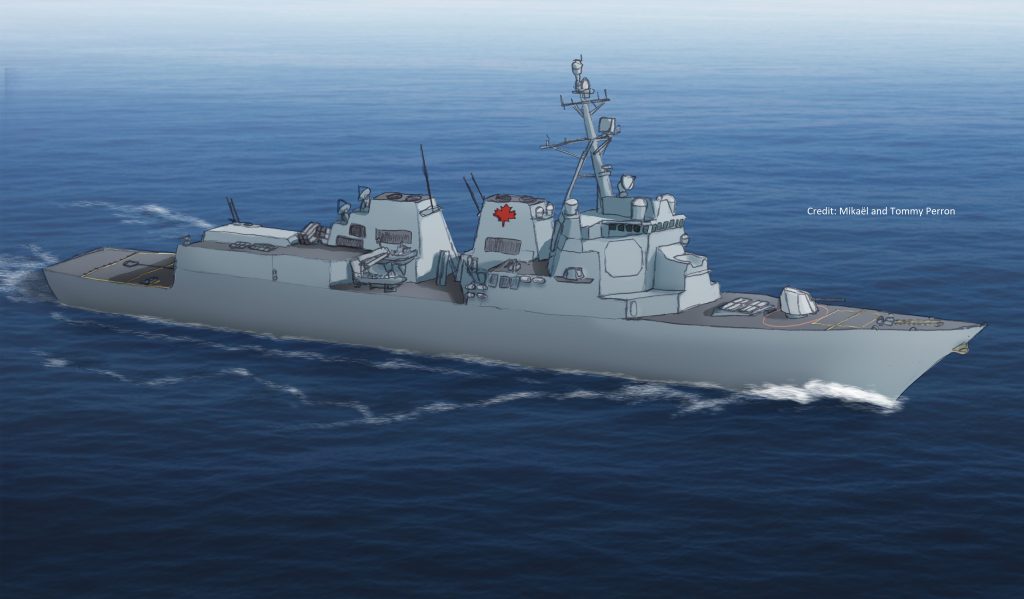
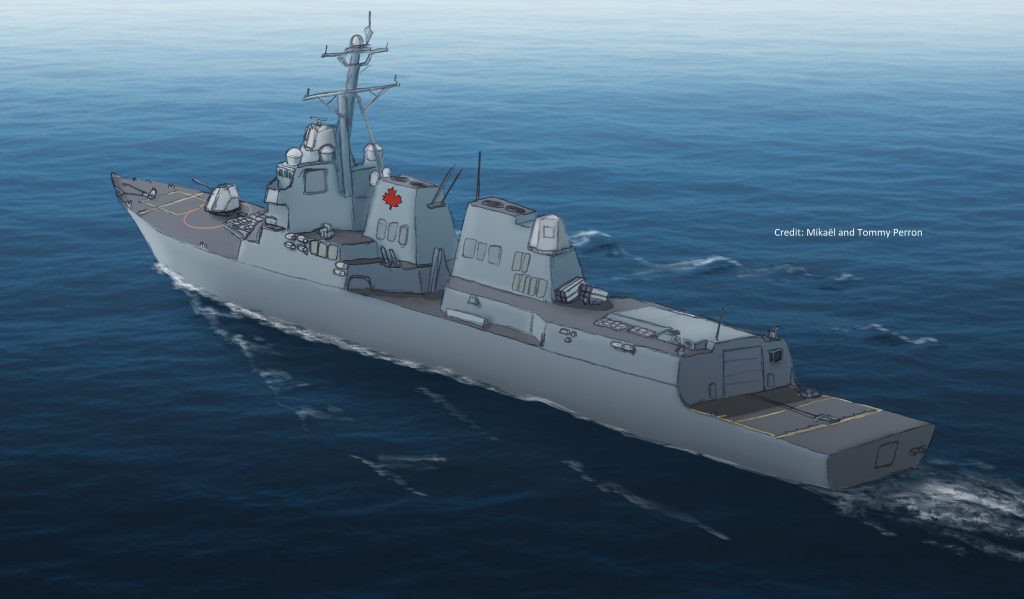
While there are worries that the USA would not sell the design (although the Japanese and Korean Aegis destroyers closely resemble the AB class), I thought of another option that is in fact an old new Idea. We could use a 100% genuine Canadian design. For years there were discussion of a Halifax class with a 10 meter extension and now could be an opportunity to build a batch III CPF as a bridging solution between the Halifax class and the CSC. The Halifax class design is about the same age as the AB class design and it could be update for a batch of four ships. A 144 m 6000 tons Halifax class could be a very capable ship that we could afford to build and to operate. We studied the fatigue over the year and could easily adapt the plan to strengthen it. The bow section would receive the extension just in front the bridge and receive a 32 cells MK41 launcher for ESSM, Standard SM2 block IIIC and Tomahawk missile. The 57mm gun would be replace by the 124/64 LW gun. Harpoon would be replaced by NSN missiles while the ESSM launcher on both side of the main funnel would be replaced by 12 cell EXLS launcher for Sea Ceptor missiles. I would replace the Phalanx CIWS with a 35mm millennium gun, just for the fun of it and the fact that it can also be used as CIWS. But we could put the CSC’s 30mm gun also; although it is les punchy! The main thing is that I would install the new mast of the CSC with SPY-7 & MDA’s illuminator on to it. I believe that an enlarged Halifax class could handle such a mast. Such a ship would also call for a completely renewed propulsion plan and auxiliary machinery to reflect on new technologies. In fact I would install the same four Diesel generators as the CSC (two in the forward auxiliary machinery room and two in the aft one). They would supply power to the ships but also the same two electrical motors as the CSC installed in the after engine room instead of the propulsion diesel engine (PDE). This could allow the ship to go up to about 21-22kts on electric drive. I’m not sure if I would keep the two LM2500 GT with an updated cross connect gearbox or also use the T26 single MT30 GT with cross connect gearbox in the forward engine room. I believe that it could take it and all of those parts are now in production. I chose to illustrate a single MT30 use on my drawing. Fewer moving parts means less maintenance anyway! Of course the bridging-the-gap design doesn’t have the crew living standard of newer ships and doesn’t possess the potential of the mission bay to be fitted on the CSC. Four such ship would be a great addition to the fleet and would have commonality with the older class and the future one! Some more stuff to think about!
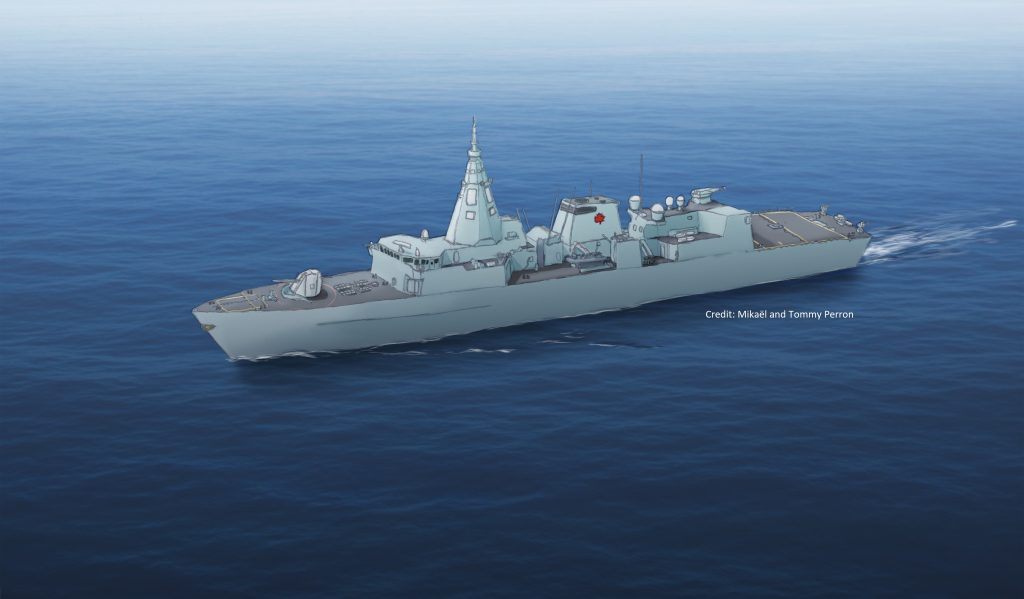
In fact we are probably just talking here. There is actually no political drive to make such a plan happen. The GoC is still negotiating with Davie Shipyard to include it into the NSS and no official contract has yet been signed for the construction of the simple ferry promised year ago, let alone 4 combat ships! On top of that, the actual workforce shortage and the COVID related and unrelated supply chain issues put at risk many actual and upcoming project in the near future. The final design of the CSC should soon be ready and hopefully be revealed to the general public. The GoC’s aim should be to timely deliver 15 fully equipped and affordable to operate CSC for the RCN. It will give Canada a world class surface fleet and consolidate the NSS in order to tackle the upcoming and most challenging Canadian Patrol Submarine Program that is to deliver a true underwater capability to the RCN so we should remain an important contributor to the world security and have a voice on the world stage.

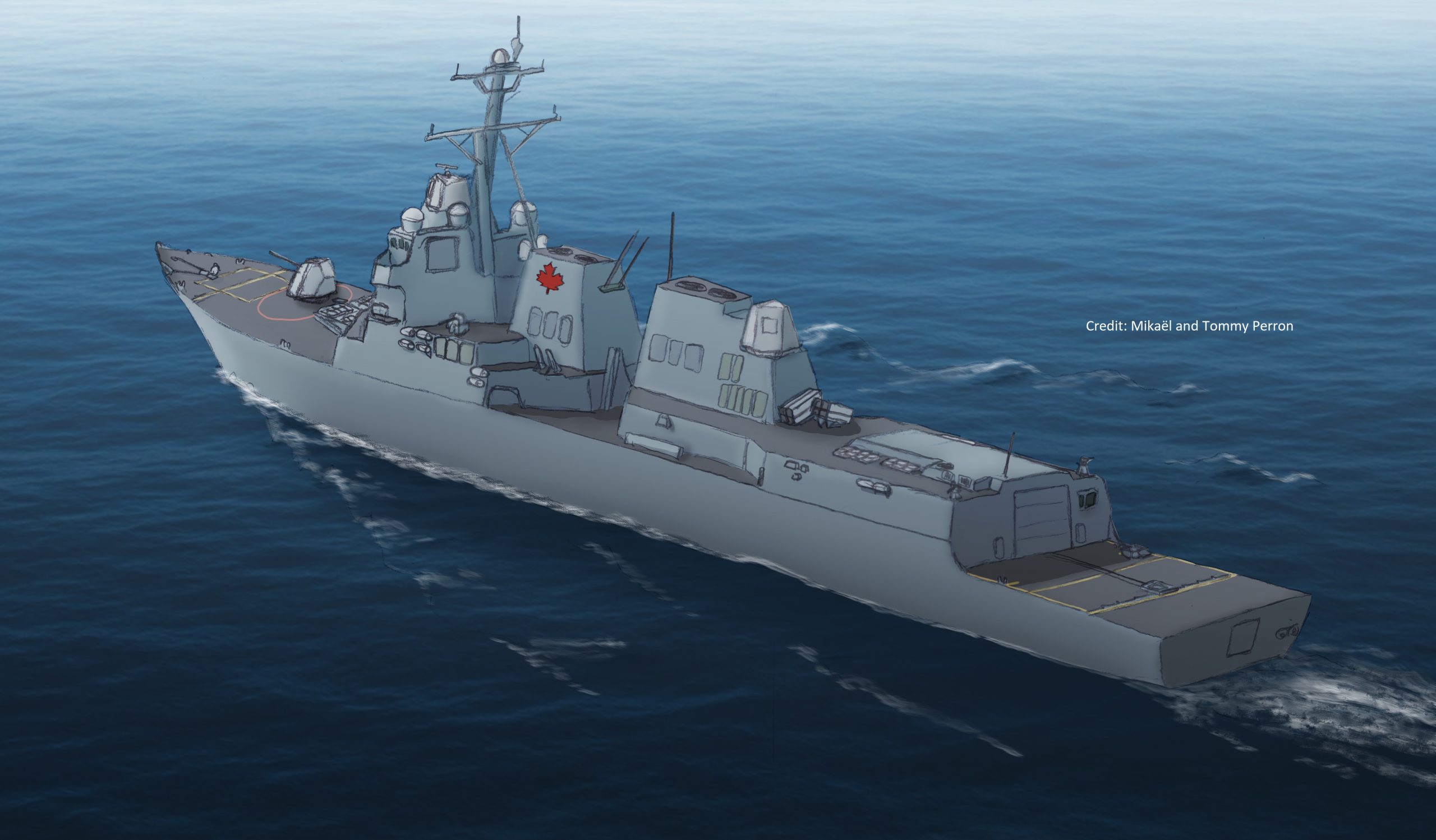
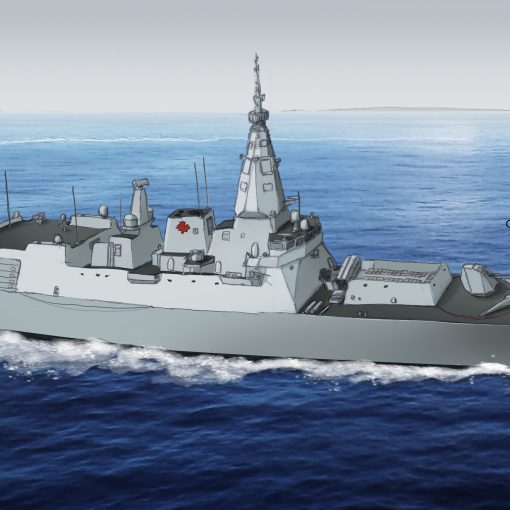
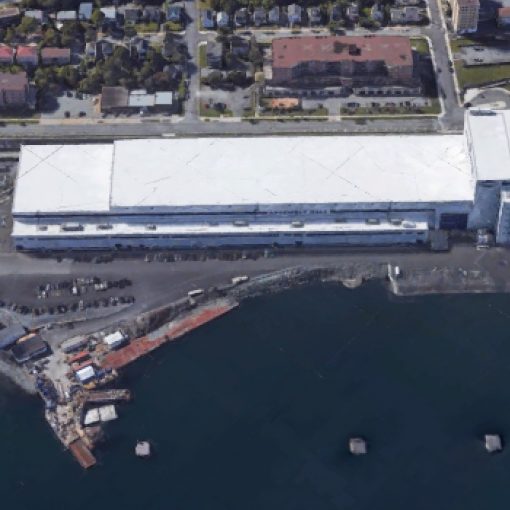
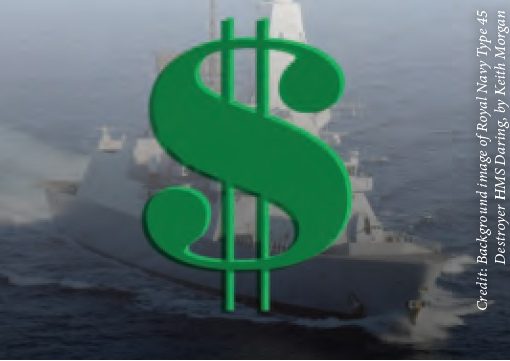
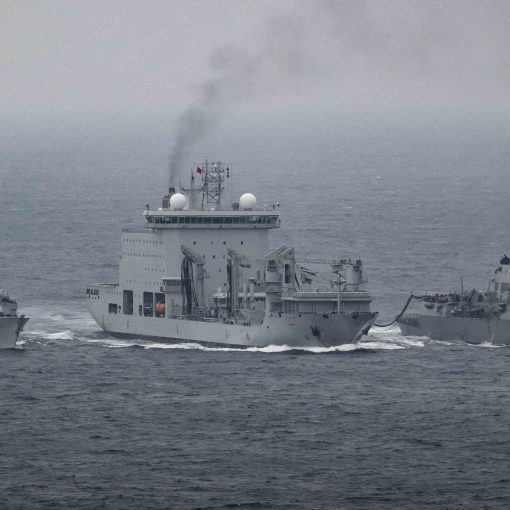
13 thoughts on “Bridging the [CSC] Gap”
Of course we know this is fantasy. As mentioned the US would never license the design, the US wouldn’t build it as their yard order books are full and the negotiations for the design, technical data rights would take years and then there’s the Canadianization of the design to make the ship more along our lines of health and safety, weapons systems, communications etc. As mentioned Davie wouldn’t build it as they are in the middle of bringing their yard in compliance with requirements for the NSP and you would think with all the PR stunts that yard as done, they would had spent the money and had their yard updated years ago. The final note on this fantasy is the operating costs for this all gas turbine ship and you just can’t just rip it out for something more economical. We also don’t have the all the sailors needed to crew it.
A updated stretched Halifax class is pure fantasy as well, stretching the ship is one thing but changing all these weights fundamentally changes the ship’s characteristics, center of gravity, center of buoyancy etc., causing all sorts of unexpected results. Not to mention any small build we lose economy of scale and blows the argument out of the water that we would have some cheaper and quicker ships available. Another orphan class means another project management office would have to be stood up, staffed and if the ships ever got built we would incur more cost maintaining another class of ship as everything doubles in effort. Has anyone forgotten our procurement system?
As the GOC has already stated we are not building another class of ship, just as they closed the door on nuclear powered submarines.
We need to focus on how to keep the Halifax class going for the next 20 years while recruiting our pool of sailors to sail in the CSC. It may come to an “Op pause” as the RCN could certainly use it to stem the hemorrhage of personnel we’re having right now.
To “Retired RCN”, I have one thing to say: Bah humbug! One can always dream, can’t one? Perhaps not as “fantasy” as you may believe. Others believe that Mikaël Perron’s AB “versions” and “visions” could very well happen. All one has to do is just ask the US (In a nice Canadian way of course) for an AB fLT IIIB or Flt IV Canadian design to happen for those who have at least “some” vision of course. It doesn’t really matter where these ships are built in Canada, just get them built! At one point in time the RCN was seriously thinking of extending some of the Halifax class ships being built, to accommodate an AAW version for the Iroquois class destroyer replacement. Being pessimistic is the reason the RCN is in the “pickle” it is right now. Do you have any “concrete” suggestions as to what to do for the RCN in the next 20 years to fill the gap? By the time your theory of “sitting on the fence” to keep the Halifax class fleet going until the first CSC frigate comes off the assembly line is not realistic, feasible or helpful. The Halifax class will simply degrade to the point where most of them will not be able to sail on either coast and we have no Navy left for the GoC to call upon for any mission required in the near future. One thing we cannot do is “Op Pause” as you say. The NATO world will not wait for us!
I’m being a realist here and treat the current situation we are currently in very seriously, so I generally don’t talk about pipe dreams such as Arleigh Burkes or Nuclear Submarines when the government has been very clear that there won’t be either. The others who believe in your or anyone else’s visions simply don’t matter as they don’t make the decisions on procurement and naval matters.
Yes it was looked at to stretch them years ago but was ultimately dismissed because it was cost prohibitive and that was when the ships were younger. To try this now, you are talking years of effort and extreme costs and if we didn’t get it right because all sorts of unexpected things come up trying to do something to a ship of that age, well we would have a big issue wouldn’t we?
Yes the RCN is pessimistic. We have to be because we have real issues. Right now crewing is more of an issue than buying fantasy ships with a current shortage of 1000 sailors and getting worst all the time. You can have all the ships in the world but you still need sailors to sail them and maintain them. It’s also not theory of keeping the CPFs going, it’s a reality. There are all sorts of things we can do to mitigate that and an Ops pause is one, all missions for Nato don’t necessarily have to have a CPF, and we have other classes of ships and a class of submarines to draw on. Significant effort and money are being spent to survey our fleet assets and increase the maintenance being done to them, such as 18 to 24 month refits and refits in greater frequency, all to increase their service life. Realistic absolutely, feasible certainly, helpful you bet!
Hello “Retired RCN” These are not “pipe dreams’ as you say but “concreate options” for the GoC to consider to see the RCN through the next decade or so. I think most forum members would strongly disagree that they “simply don’t matter”. We all have every right criticize the government and state their case or lobby the government on behalf of the RCN. Yes, the RCN has personnel shortage issues as Vice-Admiral Craig Baines has recently stated in his interview with Canadian Press and that means requesting more money from the government to recruit at least 1000 new sailors needed for the CSC Frigate program. It is unlikely the GoC will “Op Pause” our NATO commitments after the PM has stipulated that “Canada is back” within NATO in a much more meaningful way. I can just about guarantee you it will cost Canada multi-Billions of tax payer dollars to keep the Halifax class operational over the next 10+ years or perhaps more. A price we will have to pay because of Ottawa’s indecisions and ineptitudes over the past several years when it comes to the CAF.
I don’t know but your concrete is not very solid. It’s not a simple matter of requesting more money to recruit more sailors, this is not a money problem, the money is there. It’s a recruitment one and by extension also a retention issue. If we can recruit a 1000 sailors but we lose a 1000 sailors we’re no farther ahead and sometimes worse off. It’s also not just a matter of a 1000 sailors for the CSC program, it’s sailors that we desperately need now because sailors are leaving in droves because of the constant sailing and no reprieve. If we don’t do an Op Pause then we can certainly use other platforms for our NATO commitments.
You don’t have to guarantee me anything, I am well aware what the refits are currently costing and will cost us in the future and that is the price we need to pay to keep the Halifax Class operating. Yes caused by the government but it’s the RCN’s problem to solve. If they won’t give us any options then we need to keep the ships going.
Hi retired RCN. I agree that the personal shortage is one of the greatest challenge the RCN is facing. It was already a challenge while I was sailing in the 90s-2000s, but nowhere as bad as it is today. The RCN needs the full support of the GoC to attract and keep motivated sailors. After all, the RCN is the best tool available to the GoC to fulfill our commitment on the world stage thanks to the expeditionary nature of the naval forces. As for keeping the Halifax class going on for another 20 years, it is another major challenge but I believe that a lot of good things are being done to address the situation so far. On the warfare aspect, the open architecture nature of the CMS330 will allow for easy integration of new system such as the newly purchase of Sea Giraffe AMB 3D radar from Saab. The main gun is up to the MK3 standard, we need to keep on using the latest version of ESSM. By the time we retire them I could see the MK46 torpedo already being replaced by the MK54 and maybe the Harpoon by NSM missiles. I could also see the phalanx CIWS replaced by Sea-Ram CIWS in order to tackle supersonic threat. The platform life is probably more of a challenge to keep things together. While the diesel generators are being replaced, I also have no worries about the LM2500 GT and gearbox. The AC unit will also be updated but a lot of auxiliaries are obsolete and I wonder how long the Propulsion Diesel engine can keep on going? The Hfx class range is quite diminished without that engine. As for the hull life, the hull fatigue was already being monitored in the 90s and I just hope that they still do and prepare to keep things ‘Ship shape’.
Unfortunately the only real way to retain sailors is to pay them more or give them better benefits. Unfortunately over the years we have seen death by a thousand cuts in regards to benefits from Treasury board, the latest sailors being penny pinched by being changed for parking as an example.
What we need to do is is hire civilian specialists to study and make recommendations to retain and recruit people and stay out of it ourselves. We need to reopen marine and combat engineering programs at civilian universities to train the technicians of tomorrow. We need to build excitement on the new platforms we have now and the platforms of tomorrow and demonstrate to the public what is coming and how them as future sailors fit it. We need to expand the throughput for the schools including FF/DC because they are barely keeping up, and would be overwhelmed if we all of a sudden had more sailors.
Admit that we just can’t keep up the op temp and not be afraid say we can’t deploy because the robbing of peter to pay paul is counter productive.
You seem to be saying that “unfortunately” we must pay sailors more as if that is the last thing the government should be doing! The last thing the RCN needs are more “civilian specialists” to tell them what they already know. Hiring more bureaucrats will only take away $$ from what the “real sailors” at the pointy end need! Leave the recruiting and propaganda videos up to the recruiters. I have been around the RCN for some time and have learned a thing or two… “We Have Done So Much, With So Little, For So Long, That Now We Are Able To Do Anything With Nothing, Forever! (but we shouldn’t have to “Rob Peter To Pay Paul” Any More To Do It!)
It’s unfortunate because treasury board holds the purse strings and we are tied to the PS unions in our pay raises, there is no appetite to increase benefits to make this a more attractive profession. Holiday Pay, First time home buyers, IR, parking, spec 2 etc etc, it’s death by a thousand cuts. Civilian specialists who actually work and recruit for large corporations because clearly we do not know what we are doing in marketing the CAF as a career and keeping what we got and the numbers and attrition prove this. Recruiters are simply not doing their jobs in my opinion and the system is failing us because it takes almost a year if not longer to process a recruit into the system. Is that a good thing? The system is broken and we need a cohesive plan to recruit and train the sailors of tomorrow for the future fleet.
Yes I know what they did to the technician trade. They especially destroyed my old trade (Mar Eng Tech) and took the specialist 2 pay away from the qualified engineering officer of the watch. My best buddy who was chief engineer of a sub, retired after only 20 yrs because he was told not to complain about personnel shortage when senior staff were visiting the sub. There is a lot to do and they should address it right away.
Hello Mikaël. Some interesting concepts for either your AB Flt IIIB or the AB Flt IV. The only thing I would change for both models would be to replace the AB mast with the CSC Mast for both with the SPY 7 and MDA Illuminator radar and EW systems and keep the 32 cell MK 41 for both Fwd and Aft units. Your Halifax class “Batch III” option though is really intriguing. As you may know the Halifax class load-out weight is just over 5200 tons. Extending the class by 10 meters at the bow section to 144 meters to accommodate the 32 cell MK 41 system and the use of the same DGs as the CSC Frigate and MT 30 GT could very well work out. The use of the NSM to replace the Harpoon is also good. I do have some concerns though with using the CSC Frigate mast. Would it not make the ship too “top-heavy”? The use of the 127mm Leonardo gun makes sense but again a much heavier gun and mag system than the 57mm. Using the 6 EXLS launchers either side also makes sense to replace the ESSM. I would however use the 30MM Guns either side of the hanger and not use the 35mm millennium gun but replace it with a Sea Ram system. My biggest concern though would be the new weight of the ship. You estimate 6000 tons however I believe that to be a bit too conservative. I believe the total load-out weight to be over 7000 tons (perhaps 7200 tons). Don’t know how all of these changes would affect ship speed as well. What I would do is take the newest Halifax class ships (HMCS Ottawa, St. John’s, Charlottetown and Winnipeg) and use them for the conversion. An interesting concept though that could work out well before the CSC Frigates start to come off the assembly line.
In my opinion the proposals to bridge the gap not only do not help with the manning problems of the RCN, but seemingly consider the changes to the basic designs to be free both in terms of engineering time and risks of having to redesign as well adjacent or auxiliary systems. For those interested, let me bring in four links about public debate in Australia to bridge the gap untill their Hunter class frigates are delivered. A very similar case to the CSC from a peer nation.
1.- (Marcus Hellyer, 19.08.2021). https://www.aspistrategist.org.au/getting-real-about-the-schedule-for-australias-future-frigates/ : “…a life-of-type extension is already built into Plan A for the frigates”, “The first Arafura-class offshore patrol vessel (…) The OPV can be enhanced with tailored mixes of anti-ship missiles, towed array sonars, lethal and surveillance drones, and many other capabilities”.
May the RCN substitute their OPV by AOPS being buit in another yard?
2.- (Darren Gloury, 16.09.2021). https://www.aspistrategist.org.au/should-australias-navy-have-more-hobart-class-air-warfare-destroyers/ . “But if we want to increase the RAN’s capability quickly, there already is a vessel meeting most of its frigate requirements – the Hobart-class air warfare destroyer”. “The design is already done if we resist the temptation to tweak it”. “… sail away cost of the third Hobart will be around (AUD) $2 billion, possibly even less (…) any additional Hobarts will cost less than Hunters”.
Should the RCN need to canadianize the Hobarts or could sail them with their own standards? Are there so many differences as to having to tweak them heavily? Maybe just to ensure that the CH-148 Cyclone fits into the hangar and to embed a Canadian interface for the AEGIS combat system?.
3.- (Marcus Hellyer, 02.11.2021). https://www.aspi.org.au/report/delivering-stronger-navy-faster :
“… getting a second batch of three Hobarts into service”.
Might Canada join this program?
4.- (Sam Goldsmith, 14.12.2021). https://www.aspistrategist.org.au/staying-alive-in-the-ran-surface-fleet-failure-is-not-an-option/. “Ultimately, the Hobarts are and the Hunters will be fabulous surface combatants but appear to lack sufficiently deep magazines”. “It might also be possible to reload SeaRAM or Mk-49 launchers at sea…”.
Would a few Hobart AWDs, fitted with a few dozens of either CAMM or RIM-116 missiles, increase significantly the capability of the RCN on this issue, at least until the CSCs are delivered?
Hello J. Cañadas M:
IMO the AOPS is not and never will be a replacement for or a “stand-in” for our future CSC Frigates. They were not designed for that role. Nor will they carry any ASMs. They could however be fitted with TAS systems and could carry the SKELDAR V200 drone systems on board. They just do not have the speeds required of an AAW/ASuW/ASW Frigate. I have read Marcus Hellyer, Darren Gloury and Sam Goldsmith’s articles with great interest though. The Hobart AWD destroyers would be another interesting option to explore for Canada to build 4 of them but again, we would have to convince Navantia to design (Canadianize) the ships and the ASC consortium would have to build them here in Canada and not Australia. The CSC Frigate will have 24 EXLS Sea Cepter missiles so, if you could double those (2 x 6 CAMM Launchers-48 missiles) instead of RIM-116 and use the CCMS 330 Combat System with AEGIS, the CSC Frigate mast structure with SPY 7 V1 and MDA illumination Radars, the Leonardo 127mm gun, it could be possible to build 4 of them for about $12B+ CAD take away in Canada. The take-away tonnage would be about the same as the Hobart destroyer (maybe a touch more-possibly 7,200 tonnes?). I believe though that Mikaël Perron’s idea of lengthening 4 of the Halifax class frigates by 10 meters to accommodate the MK 41 VLS with the CSC mast has a better chance of succeeding than the Hobart or Arliegh Burke Flts 111 or IV classes.